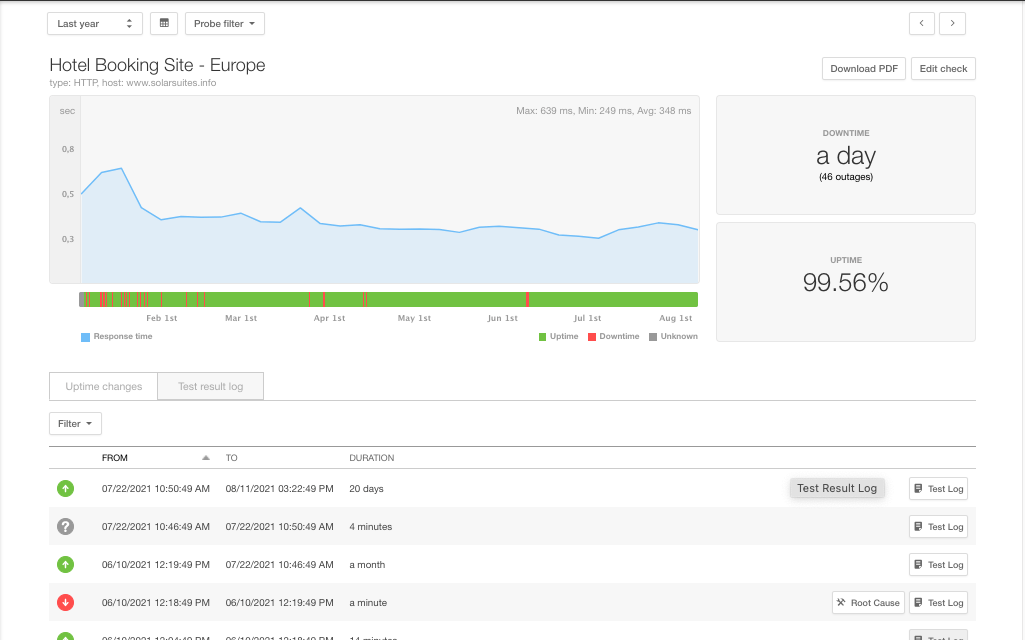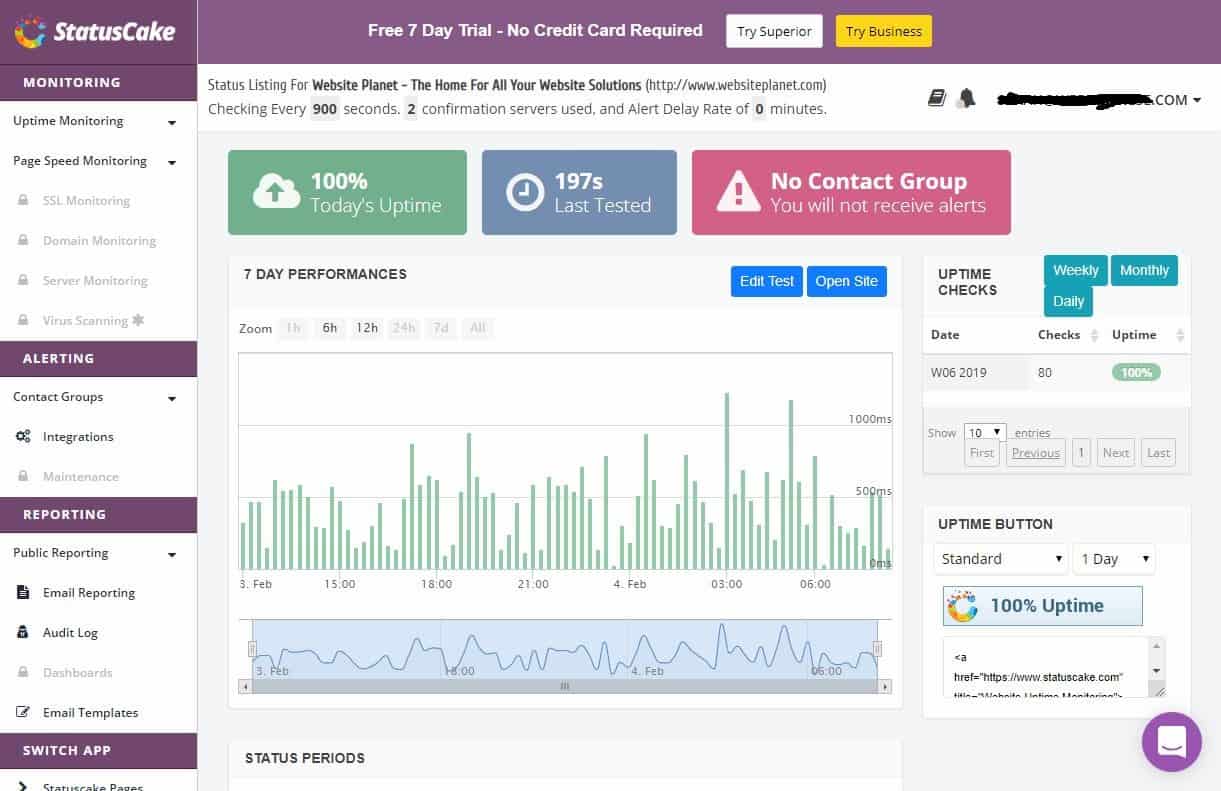

- #INTERNET UPTIME MONITOR TOOL FOR FREE#
- #INTERNET UPTIME MONITOR TOOL INSTALL#
- #INTERNET UPTIME MONITOR TOOL CODE#
- #INTERNET UPTIME MONITOR TOOL FREE#
Change the value of repo to your repository name. Change the value of owner to your GitHub username. The main configuration file is located at the root of the project (master/main branch) and is named. You should see a screen like this at the end: Finally, click on the "Add secret" button. Here for the name, enter GH_PAT and in the value field, paste the token. Select "secrets" on the left sidebar and then click the "New repository secret" button. Go to your version of the Upptime repository's settings. In easier terms these environment variables are available to the processes being run under GitHub actions. GitHub secrets are encrypted environment variables available to various GitHub action workflows. Next you need to add this token as a repository secret. Remember, you won't be able to see this again, either save it in a safe place or create a new one if needed later. Once you're able to see the key, copy it. Give this token a name and finally click on "Generate token". Read the descriptions of these specific permissions to understand why we need to select these. Do you see the "Generate new token" option? Hit it.įrom this list, select " repo" and " workflow". Now again on the left sidebar you should be able to see an option "Personal access tokens", click on it. So, you are going to provide it the access by providing it a personal access token.Īnd click on "Developer settings" from the left sidebar. To do so, it needs access to this repository. Some of these may not be necessary if you don't want any internet facing frontend, which is understandable.īy default, Upptime checks if the given websites are up or not every five minutes, depending on the result it either opens an issue (in case a site is down) or commits the relevant information like status, response time, etc. Configurationīefore publishing, there are a couple of things that need configuring. Otherwise, you won't be able to use GitHub Pages for the static website showing stats. There's a checkbox above "create repository from template", labeled "Include all branches", make sure you check that. Now give this new repository a nice name. Don't fork Upptime repository, use the template instead On the top right side you should be able to see a green button titled "Use this template". Head over to Upptime's GitHub repository. On the other hand a template repository lets someone start a fresh new project with the same files and directories. One of the key differences between a template repository and a fork is that when you fork some repo, all the previous commits are now part of this forked repository, it's good for contributing to some project. A template repository is a special type of repository, which lets others create a similar repository from it (same files, same directory structure). 
Upptime's official repository is a template repository. You might think that you now have to fork the official repository, but that's not it. Create an identical Upptime repositoryīy identical I mean having the same files and directory structure.
Setting up Upptime requires minimal technical knowledge and is completely free of cost. Configuring Upptime for downtime monitoring Sounds good, right? Let me show you the steps to configure Upptime.
If a server returns some response code other than 200, an issue will be generated automatically in the repository along with that being noticeable on the static frontend. Optionally, you can set up a status page and share the URL with your team members or clients so that they can also visualize the uptime stats and outage history. This way you can easily find out when a website goes down. You can configure downtime notification to be sent via email, Slack, Telegram and custom webhooks. Monitor any website (yours or someone else's website) every 5 minutes with GitHub Actions. Upptime: Monitor websites uptime with GitHub It is entirely handled using GitHub's tools. The best part is that you don't to install an agent or tool on your server.

This awesome open source project called Upptime allows you to easily set up your own uptime monitor for free with GitHub. Recently, I came across an even easier and painless way of setting up an uptime monitor.







 0 kommentar(er)
0 kommentar(er)
